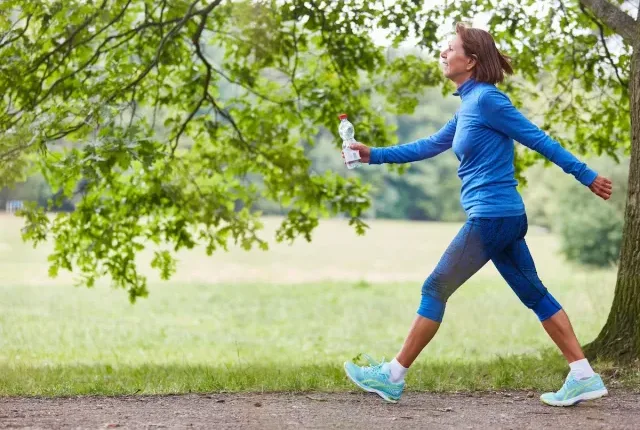If you are a senior who regularly walks for exercise, well done. Nonetheless, there is always room for improvement in your routine, and it is important to do so. We spoke to Ronny Garcia, CPT, Blink Fitness, who provides insight into 10 ways seniors can enhance their walking speed and explains why it is crucial.
“Maintaining a faster walking speed enables seniors to uphold their independence in daily activities without the need for assistive devices,” Garcia points out. “A quicker gait also allows for more efficient and easier movement. Walking at a brisk pace is indicative of good cardiovascular health, muscle strength, and bone health, all of which contribute to a lower risk of disease. Furthermore, walking faster can also reduce the likelihood of injuries from falls.”
Continue reading to discover Garcia’s top 10 recommended strategies for seniors to boost walking speed. And once you are done, be sure to check out Here’s How Long You Need To Walk Every Day for Weight Loss.
Walk consistently.


Incorporating walking into your daily routine—whether outdoors or on a treadmill—can boost your muscle strength and endurance even if you’re not going far. “These both ultimately lead to an improved gait speed,” explains Garcia.
In fact, research shows that walking, along with at-home weight-bearing resistance exercises, are seamless ways for older adults to get in physical activity and strengthen their muscles. Walking, specifically, has been proven to enhance overall physical function—and even melt belly fat.
Focus on lower-body strength training.
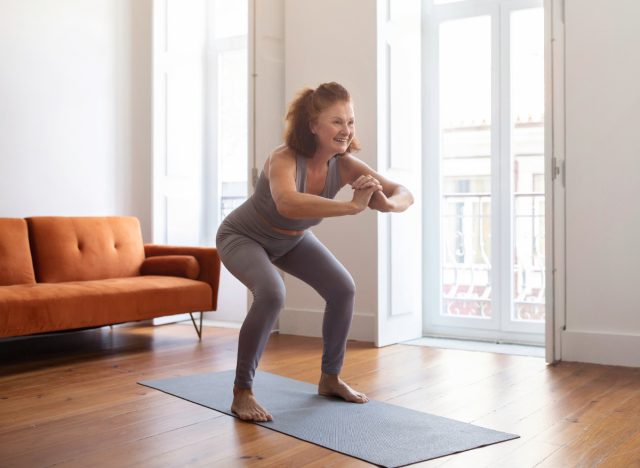

Include strength training in your routine to enhance your lower body—especially your legs. Garcia shares, “Exercises such as squats, lunges, and leg presses help improve strength and power, which are essential for faster walking.”
Perform balance exercises.
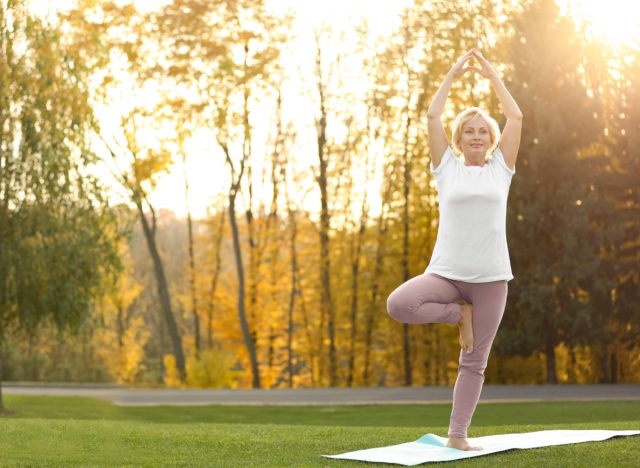

Balancing is of utmost importance as you grow older. Performing balance exercises, such as using a balance board or standing on one leg at a time, can help prevent falls and increase your stability. Garcia cautions, “Any type of injury will lead to a slower gait speed.”
Stretch your lower body.
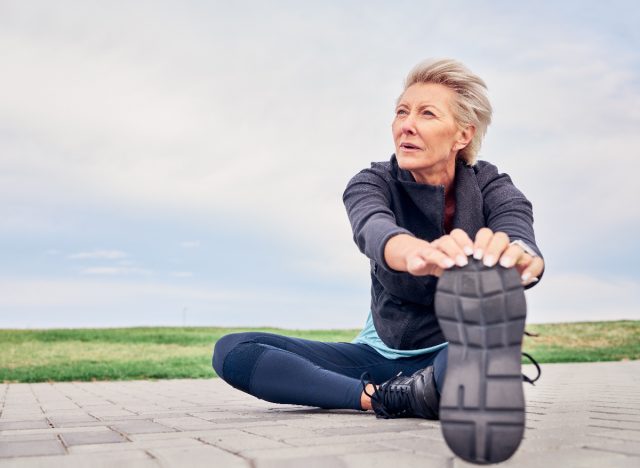

Along with strength training, stretching out your lower body is crucial. “It will improve range of motion and stride length which contribute to faster walking speeds,” says Garcia.
Switch up your walking speed.
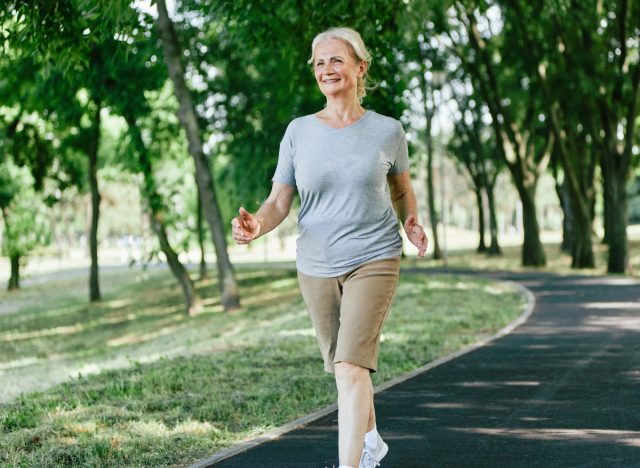

Alternating your walking speed will help strengthen your overall cardiovascular fitness. Plus, it keeps things interesting and challenging and will increase your gait speed over time, Garcia adds.
Wear supportive shoes.
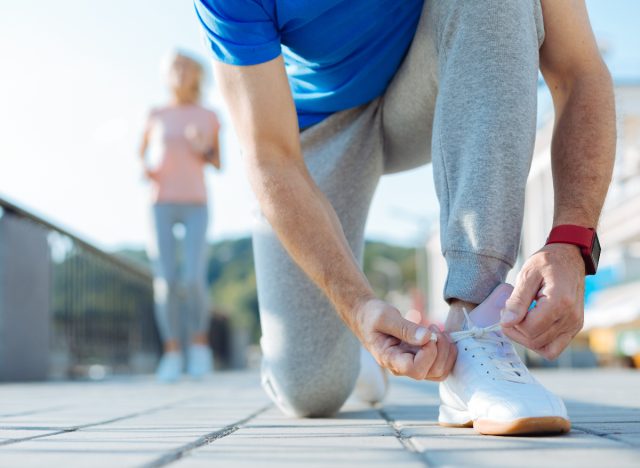

Your footwear is something to be mindful of, Garcia notes. It should be well-fitting and supportive to provide optimal stability and comfort. In addition, your shoes should have slip-resistant soles and soft, flexible uppers, according to Foot Centre Group.
If you’re unsure of what brand may work best for you, it’s always a good idea to check in with a podiatrist or your healthcare provider who can guide you in the right direction.
Consider a walking aid.
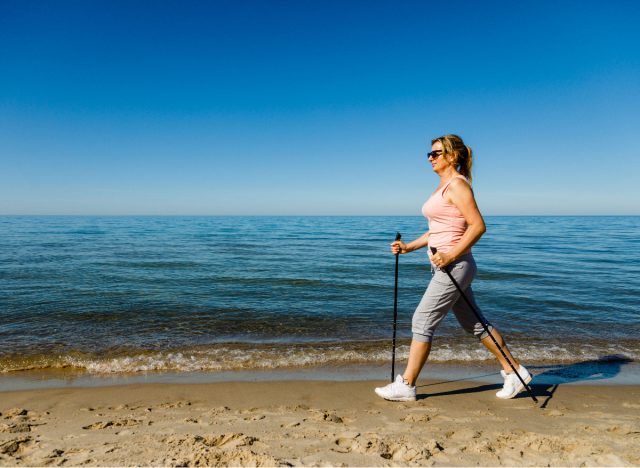

Another tip from Garcia is to consider using a walking aid (such as trekking poles, a cane, or walker) for extra steps, as it can help provide better stability and get you up and around—if that is an option. As previously stressed, it’s always a crucial step to chat with your healthcare provider to ensure this tip is appropriate for you.
Be mindful of your technique.
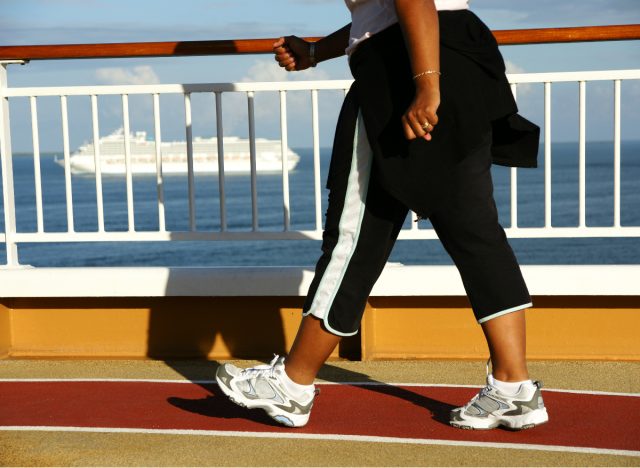

There are standard techniques to consider when your goal is to improve your gait speed. For example, be sure to stand tall, and make your steps faster rather than longer. It may also be beneficial to keep your arms bent at a 90-degree angle so you can move them back and forth at a quick pace.
Count your steps.
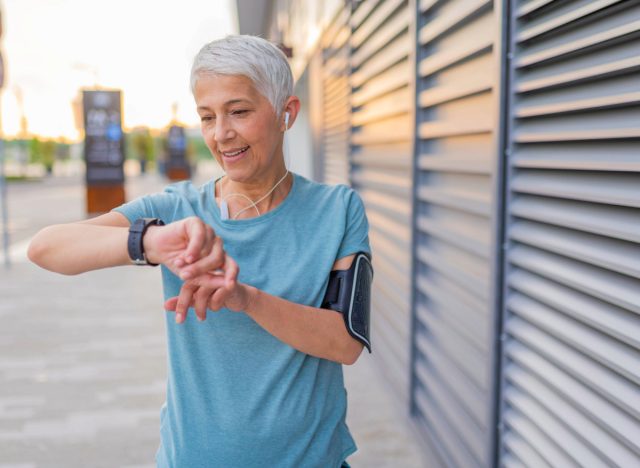

You may find it helpful to count the number of steps you take in a minute and make it your goal to complete more steps in the same amount of time. There are so many useful tools out there, such as the Fitbit, Garmin, and Polar Ignite that track your steps and help you challenge yourself.
Don’t push yourself.
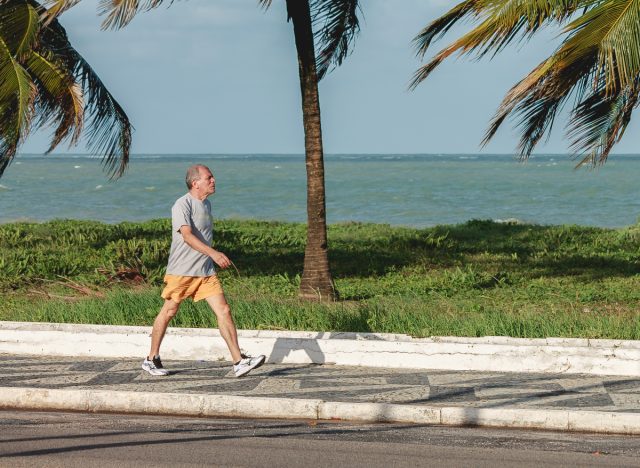

Challenge yourself, but don’t overdo it. It’s important to go at your own pace and never feel that you are pushing yourself to the extreme or an uncomfortable level. If you walk the same amount of time each day and add extra steps to that timeframe, you may very well be walking faster in no time.
Frequently Asked Questions (FAQs)
How important is gait speed for seniors?
Gait speed is a crucial measure of overall health and function in seniors. It can indicate the risk of falls, cognitive decline, and even mortality. Improving gait speed can enhance independence and quality of life for seniors.
What are the benefits of improving gait speed for seniors?
Improving gait speed can lead to increased mobility, reduced risk of falls, improved balance and strength, enhanced cardiovascular health, and overall better quality of life for seniors.
How can seniors effectively improve their gait speed?
There are various ways for seniors to enhance their gait speed, including regular exercise, physical therapy, strength training, balance exercises, proper nutrition, adequate hydration, good posture, and using assistive devices if needed.
1. Is regular exercise important for improving gait speed?
Yes, regular exercise, especially aerobic and strength training exercises, can significantly improve gait speed in seniors. It helps improve muscle function, balance, and overall cardiovascular health.
2. How does physical therapy help in improving gait speed?
Physical therapy can provide targeted exercises and interventions to address specific gait impairments, improve balance, and enhance muscle function, all of which can contribute to faster gait speed in seniors.
3. Are strength training exercises beneficial for enhancing gait speed?
Absolutely, strength training exercises can help seniors build muscle strength, improve endurance, and enhance overall physical performance, leading to faster and more stable gait speed.
4. What role do balance exercises play in improving gait speed?
Balance exercises are essential for seniors to improve their stability, coordination, and proprioception, all of which are critical for a steady and faster gait speed. They can help prevent falls and enhance overall mobility.
5. How does proper nutrition contribute to better gait speed?
A balanced and nutritious diet can support muscle health, energy levels, and overall physical well-being, which are all essential for faster gait speed. Adequate protein, vitamins, and minerals are particularly crucial for seniors.
6. Why is hydration important for gait speed improvement?
Proper hydration is vital for muscle function, joint lubrication, and overall performance during physical activity. Seniors should ensure they drink enough water to support their gait speed improvement efforts.
7. Does maintaining good posture have an impact on gait speed?
Yes, maintaining good posture while walking or standing can help seniors improve their balance, reduce strain on muscles and joints, and ultimately contribute to a smoother and faster gait speed.
8. Are assistive devices beneficial for seniors looking to improve gait speed?
In some cases, assistive devices such as canes, walkers, or orthotic inserts can support seniors in improving their gait speed by enhancing stability, reducing pain, and increasing confidence during walking. Consultation with a healthcare professional is recommended.
9. How long does it typically take for seniors to see improvements in gait speed?
The timeline for improvement in gait speed can vary depending on individual factors such as current fitness level, health condition, and adherence to exercise and therapy programs. Seniors may start to notice improvements within a few weeks to a few months of consistent effort.
10. Are there specific exercises or activities that seniors should avoid when trying to improve gait speed?
Seniors should avoid high-impact exercises that could increase the risk of falls or injury, especially if they have underlying health conditions or mobility issues. It is important to consult with a healthcare provider or physical therapist to determine the most suitable and safe activities for improving gait speed.

